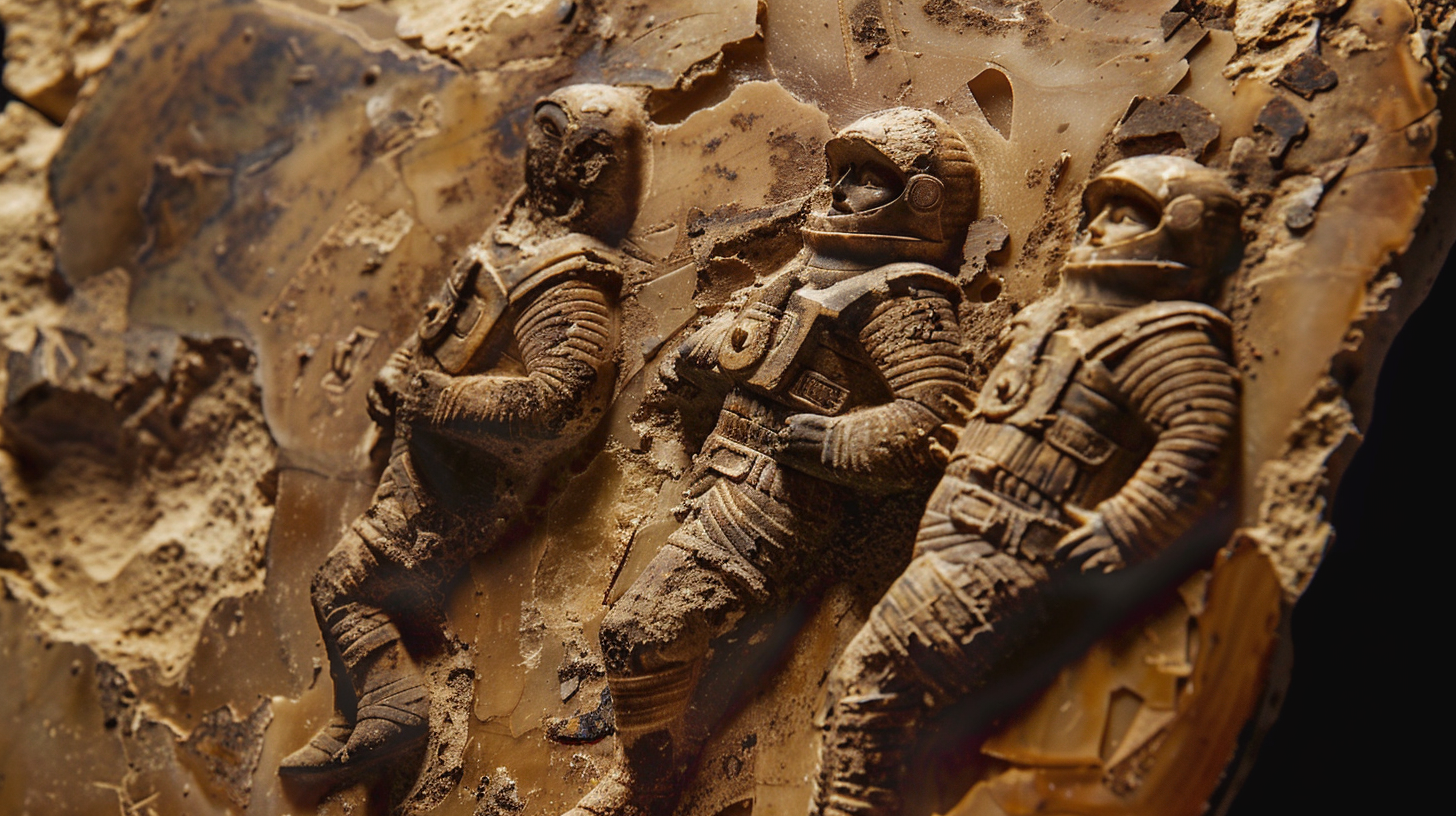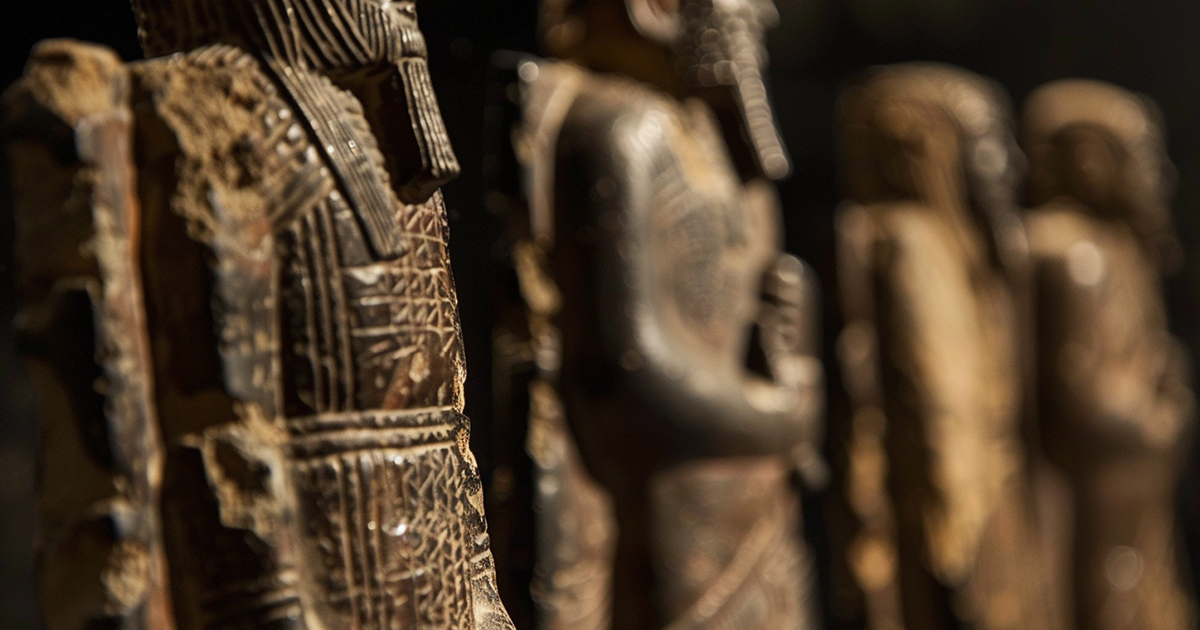Emerging as pioneers in human history, the ancient Sumerians have left an indelible mark as trailblazers of civilization. Their progress in writing, mathematics, and governance paved the way for upcoming societies. However, hidden within their rich cultural heritage lies a conundrum that has captivated scholars and enthusiasts – the depiction of ancient astronauts on Sumerian clay tablets. These enigmatic figures, adorned in what appears to be specialized attire, have sparked intense speculation about encounters with extraterrestrial beings. Yet, do these representations offer evidence of interstellar visitors, or are they merely symbolic reflections rooted in human mythology?
Discovery of Sumerian clay tablets traces back to the 19th century, when archaeologists unearthed remnants of ancient Mesopotamia, now present-day Iraq. Among these finds were numerous inscribed clay tablets shedding light on Sumerian society, spirituality, and narrative. Among these tablets are portrayals of human-like entities garbed in unconventional apparel – attire reminiscent of contemporary spacesuits.
Promoters of the ancient astronaut theory argue that these depictions validate the presence of extraterrestrial beings who shared advanced knowledge with the Sumerians. They emphasize the intricate details of the clothing, drawing parallels to modern astronaut equipment like helmets, gloves, and even what appears to be oxygen gear. According to this perspective, the Sumerians’ proficiency in astronomy, mathematics, and engineering could be attributed to interactions with these extraterrestrial entities.

Advocates of this notion also cite Sumerian texts like the Epic of Gilgamesh, narrating stories of gods descending from the skies in flying machines. They contend that these tales strikingly resemble modern spacecraft, implying that the Sumerians might have witnessed technological wonders beyond their time.
However, detractors caution against rushing to extraterrestrial conclusions. They suggest that the depictions on the clay tablets could symbolize deities or mythical characters rather than literal representations of aliens. In ancient Mesopotamian belief, gods and goddesses frequently assumed human-like forms, blurring the lines between mortal and divine. Thus, the figures on the tablets might be interpreted as depictions of these mythical beings rather than actual extraterrestrial visitors.
Furthermore, critics stress that interpreting ancient relics through contemporary perspectives risks imposing present-day biases and assumptions onto past civilizations. Without solid corroborating evidence such as remnants of advanced technology or direct references to alien encounters, the ancient astronaut theory remains speculative.
In response to these criticisms, supporters of the ancient astronaut concept point to other ancient cultures depicting humanoid beings in advanced apparel. From Egyptian rulers to the Nazca lines in Peru, they argue for a global prevalence of ancient civilizations portraying interactions with beings from outer space.
Amidst varying levels of credibility in speculative theories, different interpretations of ancient artifacts offer nuanced perspectives. Rather than suggesting direct alien contact, some scholars propose that these depictions symbolize human desires for exploration and transcendence. In this light, the figures on the clay tablets embody humanity’s intrinsic curiosity about the universe and our longings to surpass earthly limitations.
Ultimately, the discourse on Sumerian clay tablets and the depiction of ancient astronauts underscores the complexities of deciphering ancient artifacts and the inherent limitations of our understanding. While the quest for definitive answers to age-old mysteries persists, the truth may lie in the vast realm between skepticism and speculation.
As we continue unraveling ancient enigmas, it is essential to approach ancient artifacts with humility and an open mind. Whether the representations on Sumerian clay tablets truly signify encounters with extraterrestrial beings or simply reflect the diverse tapestry of human mythology, one certainty remains – the pursuit of knowledge and insight transcends temporal and spatial boundaries, guiding us on an expedition through the ages.
